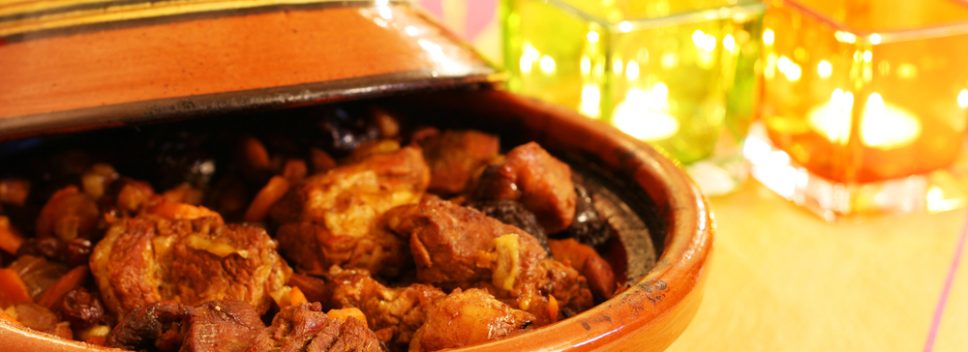
![]() October 10, 2024
October 10, 2024
The History of the Tajine
The Tajine is a traditional Mediterranean dish that is popular the world over. It gets its name from the Greek word “têganon” which means “Earthern Dish.”
Unsurprisingly, the name stems from the type of dish Tajine is cooked in. It’s always cooked in a clay cooking dish. Although Tajine is called slightly different names depending on which region it comes from, and the style of clap cooking dish varies also, it almost always means a clay pot with a conical lid.
The pot is ingenious because the lid traps moisture from the cooking food under the lid, and drips it back down onto the food. The result is a food that cooks while still retaining moisture.
Tajine can be cooked with a variety of different ingredients but is usually some sort of meat and vegetables cooked in a clay pot. Although ingredients vary depending on where the people using the pot was cooking, it nearly always included some sort of meat and an abundance of vegetables.
Is Tajine Healthy?
Like most Mediterranean dishes, Tajine stews are usually very healthy. These stews tend to be full of vegetables, including antioxidants rich peppers, vitamin c rich tomatoes, and immunity boosting garlic.
Tajine is a staple in many countries around the world, so it makes sense for the dish to be both healthy and delicious.
Since Tajines are a broad spectrum of dishes with the clay pot they are cooked in as their common roots, it’s important to look at the ingredients when deciding if it is a healthy dish.
Fortunately, most traditional dishes cooked in the tajine are indeed healthy, regardless of where they originated from.
History of Tajine
The Tajine goes back centuries, with the first known mention in the classic Arabian tale, One Thousand And One Nights. Evidence of Tajines have also been found at the the Antonine Wall, a Roman creation that suggests people with direct knowledge in how to make African style Tagines was at the wall.
The Roman Tajines found at the Antonine Wall may have been far from home, but they’re good evidence at how popular this cooking style was at the time. The earthenware pots made it so little water needed to be used to create a meal, which is especially important in areas where water was scarce.
As the Tajine grew in popularity, new and wonderful dishes evolved along with it. In Morocco, dishes include dried fruits being added for a unique savory-sweet flavor, while in the Atlas mountains, you’re more likely to find meats and root vegetables in the dish.
The Tajine was also popular with nomadic tribes, since it made cooking over a campfire delicious and easy.
Conclusion
The Tajine is a dish rich with history. From the Roman civilization to the nomadic tribes of Africa, the Tajine has provided ancient civilizations with healthy, delicious food for hundreds of years. Today, we still love and appreciate this form of cooking as a healthy and delicious meal that can be enjoyed by all.
